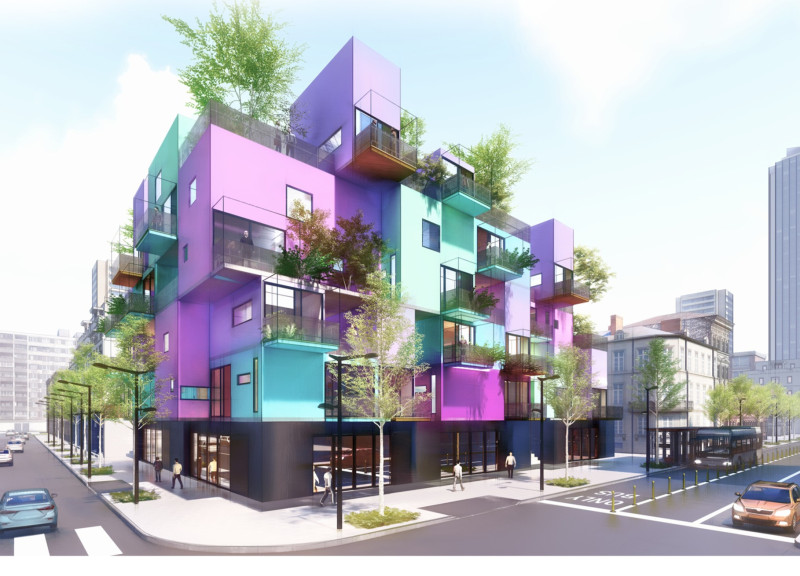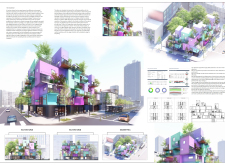5 key facts about this project
The design explores the complex relationship between occupants and their environments, highlighting how user actions can affect the performance of spaces. It is situated in a context that encourages environmental efficiency and interaction. The aim is to create an architectural response that not only meets the needs of users but also adapts to local climate conditions. This perspective offers a fresh approach to the challenges of modern living while embracing sustainability principles.
Adaptive Comfort
The concept of adaptive comfort serves as a foundation for the design. It allows for greater flexibility in how occupants can adjust their surroundings according to their preferences. Understanding comfort as a personal choice means that individuals can find their own balance between indoor and outdoor conditions. By reducing reliance on mechanical systems, the design promotes a healthier interaction with the environment.
Environmental Strategies
Innovative practices focused on low-energy architecture reduce overall carbon emissions. The design emphasizes that buildings do not consume energy on their own; instead, it is the actions of the inhabitants that drive energy use. This understanding fosters spaces where occupants feel a stronger connection to their environment, ultimately leading to lower energy consumption and greater awareness of sustainability.
Integration of Natural Elements
Natural elements play a crucial role in maintaining a comfortable indoor climate. The design emphasizes natural ventilation and the use of daylight, allowing spaces to remain bright and inviting. Specific materials are not explicitly listed, but the design suggests careful consideration of resources that support energy efficiency and respond to the surrounding environment.
User-Centric Approach
A focus on the needs of occupants is central to the design methodology. Variations in individual responses to environmental changes highlight the importance of adaptability in comfort levels. Research indicates that comfort temperatures can differ significantly from standard calculations. This insight reinforces the connection between occupant lifestyle and local climate, creating a more personalized experience.
Large windows are strategically positioned to invite ample natural light into the space, reducing the need for artificial lighting and creating an engaging atmosphere. This thoughtful design element fosters a sense of connection between the indoor and outdoor environments.



















































